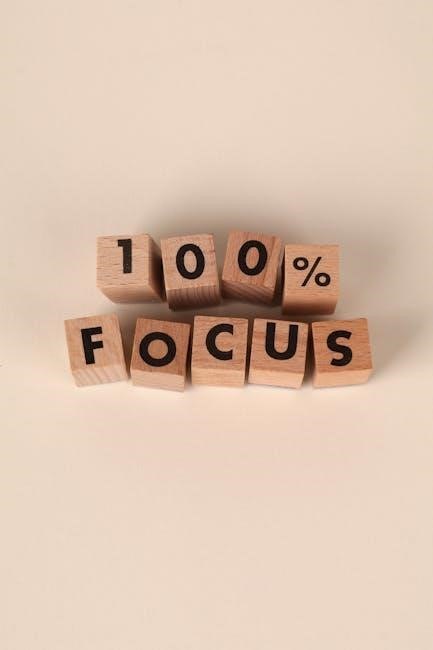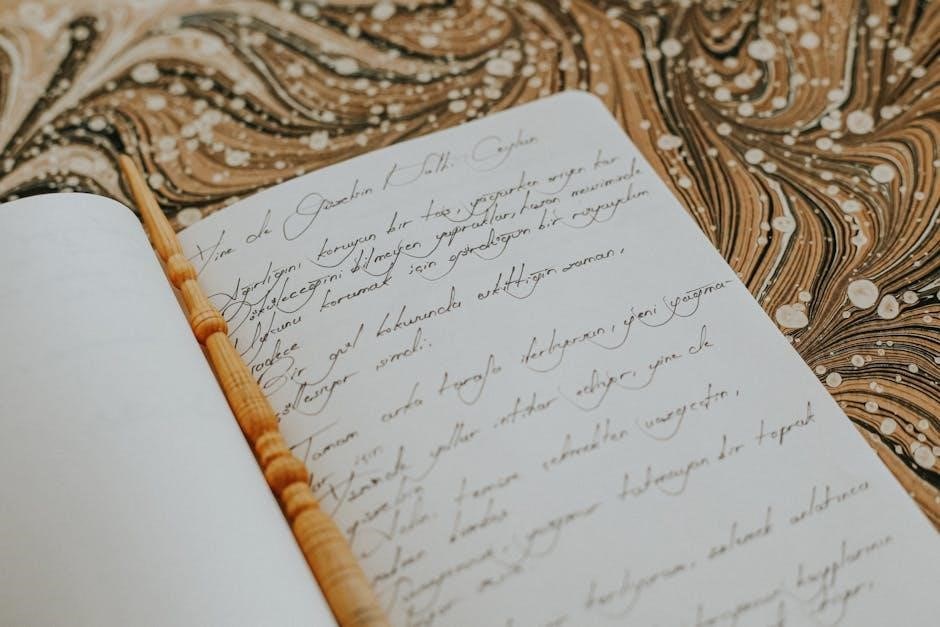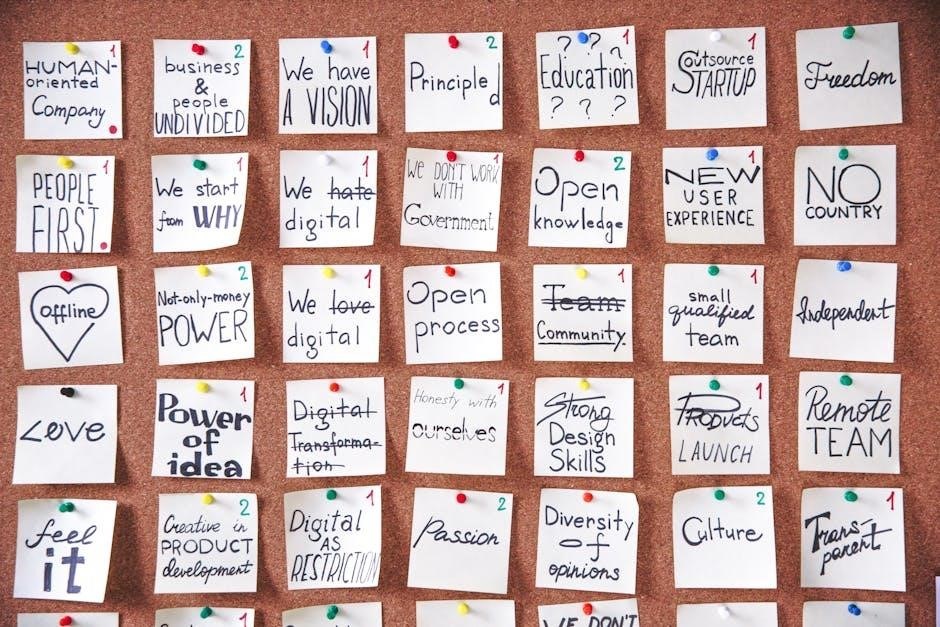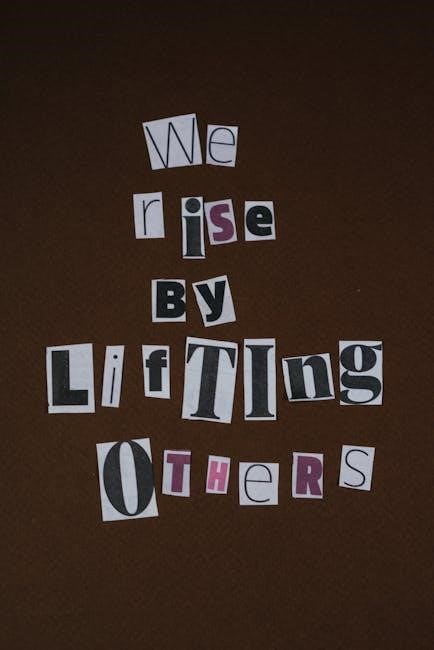
100 most common yiddish words pdf
Yiddish, a language rooted in Central and Eastern European Jewish communities, blends Middle High German, Hebrew, and Slavic influences. Its rich cultural heritage includes literature, theater, and music, making it a vibrant part of Jewish identity. Today, Yiddish words like “schlep” and “kvetch” are woven into everyday English, showcasing its enduring impact. Exploring the 100 most common Yiddish words offers a gateway to understanding this unique linguistic and cultural treasure.
Brief History of Yiddish
Yiddish emerged in the 10th century as a fusion of Middle High German, Hebrew, and Aramaic, with later influences from Slavic and other languages. It became a vital language for Ashkenazi Jews in Central and Eastern Europe, serving as a bridge between Jewish and non-Jewish cultures. By the 13th to 16th centuries, Yiddish was widely used in daily life, literature, and theater. The 17th and 18th centuries saw its expansion, with Yiddish becoming a unifying force for Jewish communities. In the 19th and 20th centuries, it flourished in Eastern Europe and among Jewish immigrants in cities like New York. Despite facing challenges, including the Holocaust and assimilation, Yiddish remains a symbol of Jewish heritage. Today, it is recognized for its cultural richness, with efforts to preserve and teach it. Learning the 100 most common Yiddish words offers a connection to this enduring linguistic legacy.
Importance of Yiddish in Jewish Culture
Yiddish holds a profound significance in Jewish culture, serving as a reflection of Jewish identity, history, and resilience. It emerged as a lingua franca for Ashkenazi Jews, blending languages like German, Hebrew, and Slavic tongues, symbolizing the adaptability and cultural richness of Jewish communities. Yiddish became a medium for literature, theater, and everyday communication, fostering a sense of unity and shared heritage. Its vibrant expressions, from humor to wisdom, captured the Jewish experience, making it a cornerstone of cultural continuity. Even as many Jews assimilated into other languages, Yiddish endured, preserving traditions and stories. Today, learning the 100 most common Yiddish words offers a meaningful way to connect with this legacy, honoring the language’s role in Jewish history and its ongoing relevance in modern Jewish identity.
Why Learn Yiddish Words?
Learning Yiddish words offers a gateway to understanding a rich cultural heritage and connecting with Jewish traditions. Yiddish, a language born from the blending of Middle High German, Hebrew, and Slavic languages, carries a unique history and emotional depth. By mastering common Yiddish words, one gains insight into the humor, wisdom, and resilience of Jewish communities. These words, such as schlep, kvetch, and chutzpah, are not just expressions but reflections of a vibrant culture. They often convey nuances that English cannot capture, making them invaluable for enhancing communication and storytelling. Additionally, Yiddish words are increasingly found in everyday English, particularly in media and literature, making their knowledge both practical and enriching. Learning these words fosters a deeper appreciation for Jewish identity and provides a meaningful way to honor and preserve this linguistic legacy.
The 100 Most Common Yiddish Words
Mastering the 100 most common Yiddish words provides a foundation for understanding the language and culture. Words like schlep, kvetch, and chutzpah are essential for grasping Yiddish humor and wisdom, offering insights into Jewish heritage and everyday conversations.
Greetings and Common Phrases
Yiddish greetings and phrases are infused with warmth and humor, reflecting Jewish cultural values. Common expressions include “Shalom” (hello, peace), “Gut Shabbos” (good Sabbath), and “L’chaim” (to life). Phrases like “Oy vey” (woe is me) and “Kvetch” (complain) are widely recognized. “Mazel tov” (good luck) is often used to celebrate occasions, while “Bubbe” (grandmother) and “Zayde” (grandfather) honor family ties. Everyday phrases like “Shlep” (drag) and “Chutzpah” (audacity) add flavor to conversations. These phrases, rooted in tradition and humor, are not only practical but also connect speakers to a rich cultural heritage, making Yiddish a vibrant and expressive language for daily interactions and cultural exchange.
Family-Related Terms
Yiddish family-related terms are deeply rooted in cultural heritage and emotional connection. Common words include “Bubbe” (grandmother) and “Zayde” (grandfather), reflecting respect and affection for elders. “Mensch” describes a kind, honorable person, often used to praise someone’s character. “Nudnik” humorously refers to a nagging or annoying person, while “Kvetch” captures the act of complaining, often in a loving manner. Terms like “Shlep” (to drag) and “Chutzpah” (audacity) add flavor to family interactions. These expressions, passed through generations, highlight the importance of family bonds in Jewish culture. They not only describe relationships but also convey the warmth, humor, and resilience central to Yiddish heritage, making them essential for understanding the language and its cultural context.
Food and Cuisine Vocabulary
Yiddish food and cuisine vocabulary is a delicious reflection of Jewish cultural heritage. Common terms include “bagel”, “knish”, “latke”, and “challah”, which are staples in Jewish cuisine. “Matzo” and “brisket” are central to holiday meals, while “kugel” and “blintzes” are beloved dishes. “Lox” and “rugelach” are popular for their rich flavors. These words not only describe food but also evoke memories of family gatherings and traditions. Yiddish food terms often carry humor and warmth, like “nosh” (to snack) or “bless your face” (a playful way to say “bless you” when someone sneezes during a meal). Exploring these culinary expressions offers a tasty journey into Yiddish culture, highlighting the importance of food in Jewish life and identity.
Expressions of Emotion and Reaction
Yiddish is rich in expressions that convey emotion and reaction, often with humor and nuance. Common words like “kvetch” (to complain) and “kibbitz” (to joke around) reflect everyday interactions. “Feh” expresses disgust, while “mazel tov” celebrates good fortune. “Chutzpah” describes audacity, and “klutz” refers to clumsiness. “Shlep” conveys dragging or carrying, often used humorously. “Shmaltz” captures over-the-top sentimentality, and “schmooze” is about casual conversation. These expressions add flavor to language, reflecting Jewish cultural values and humor. They often evoke strong reactions, making Yiddish a vibrant way to express emotions. Learning these terms connects speakers to a heritage of lively communication and shared experience, enriching both personal and cultural expression.
Everyday Objects and Concepts
Yiddish enriches daily life with unique terms for common objects and concepts. Words like “bentsher” (a blessing, often after meals) and “kibbitzer” (someone who jokes around) reflect everyday interactions. “Schmaltz” refers to rendered chicken fat, while “chazer” means pig, often used metaphorically. “Nebbish” describes an unfortunate or pitiful person, adding humor to descriptions. “Shul” (synagogue) and “shtetl” (small Jewish village) connect to cultural spaces. “Tchotchke” (knick-knack) and “schlep” (to drag or carry) are relatable for everyone. These terms bring vibrancy to language, blending practicality with cultural depth. Learning them offers insight into Jewish life and traditions, making communication more colorful and meaningful. They are essential for understanding Yiddish’s role in shaping everyday conversations and cultural identity.

Yiddish Words in Everyday English
Yiddish words like “schlep”, “kvetch”, and “chutzpah” are seamlessly integrated into English, reflecting cultural exchange. These terms add flavor to conversations, showcasing Yiddish’s lasting influence on modern language.
Yiddish Influence on American English

Yiddish has profoundly shaped American English, with many of its words becoming integral to everyday language. Terms like “schlep”, “kvetch”, and “chutzpah” are widely used, reflecting the cultural exchange between Jewish and American communities. These words often fill gaps in English, offering unique expressions for specific emotions or actions. For instance, “schlep” captures the idea of dragging or carrying something burdensome, while “kvetch” describes complaining in a playful yet exasperated manner. Yiddish phrases like “oy vey” and “mazel tov” are also commonly heard, adding flavor to conversations. This linguistic blending highlights the vibrant diversity of American culture and the enduring legacy of Yiddish in shaping modern language. The integration of Yiddish words into English underscores the dynamic nature of language evolution and cultural interchange.
Popular Yiddish Words Used in Media
Yiddish words have become a staple in media, adding flavor and humor to various forms of entertainment. In TV shows like Seinfeld and The Marvelous Mrs. Maisel, Yiddish phrases like “schlep”, “kvetch”, and “chutzpah” are frequently used to evoke laughter and cultural nostalgia. Movies often incorporate Yiddish expressions to create authentic Jewish characters, such as in “Yentl” or “Fiddler on the Roof”. Even in music, artists like Klezmer bands and modern performers weave Yiddish lyrics into their songs, preserving the language’s vibrancy. Media’s embrace of Yiddish highlights its universal appeal and the unique perspective it brings to storytelling. By using these words, creators connect audiences to Jewish heritage while making it relatable and entertaining. This cultural exchange ensures Yiddish remains relevant in contemporary media, bridging generations and fostering appreciation for its rich linguistic history.
Yiddish Slang in Modern Usage
Yiddish slang has found a vibrant place in modern language, with many words becoming part of everyday conversation. Terms like “schlep” (to drag or carry) and “kvetch” (to complain) are frequently used in informal settings. Even phrases like “chutzpah” (audacity) and “klutz” (clumsy person) have become mainstream, adding humor and flavor to dialogue. Social media and casual conversations often feature Yiddish expressions, showcasing their adaptability. For instance, “mensch” (a kind person) and “nosh” (to snack) are widely recognized and used. This modern usage highlights how Yiddish slang continues to evolve, blending seamlessly into contemporary culture. Its enduring popularity demonstrates the unique charm and expressiveness of Yiddish, making it a lively addition to modern communication.

Learning Yiddish: Tips and Resources
Start with common Yiddish words and phrases, focusing on pronunciation and context. Immerse yourself by listening to Yiddish music or watching classic Yiddish films. Practice regularly using online resources or language exchange programs to build fluency and confidence in your learning journey.
Best Ways to Learn Yiddish
Learning Yiddish can be an enriching experience, especially when approached with the right strategies. Start by immersing yourself in the language through Yiddish music, films, and literature, which provide cultural context and pronunciation guidance. Enroll in online courses or use language apps designed for Yiddish learners, as they often include interactive exercises and audio resources. Practice speaking with native speakers or join language exchange programs to build conversational skills. Utilize dictionaries like the Comprehensive English-Yiddish Dictionary (CEYD) for accurate translations and insights into word origins. Flashcards and vocabulary lists, such as the 100 most common Yiddish words, can help memorize key terms. Set achievable goals, like learning a few words daily, and engage with Yiddish-speaking communities to stay motivated. Combining these methods ensures a well-rounded and enjoyable learning process.

Recommended Yiddish Dictionaries and Guides
For learners of Yiddish, dictionaries and guides are indispensable tools. The Comprehensive English-Yiddish Dictionary (CEYD), developed from the work of Dr. Mordkhe Schaechter, is a standout resource, offering detailed definitions and cultural insights. Its design emphasizes clarity and accessibility, making it ideal for both beginners and advanced learners. Another valuable resource is the English-Yiddish Dictionary by Uriel Weinreich, known for its thorough coverage of Yiddish vocabulary. Additionally, the Yiddish-English/English-Yiddish Dictionary by Sol Steinmetz provides practical translations and usage examples. For those seeking a concise starting point, the 100 Most Common Yiddish Words guide is a handy reference, focusing on essential terms used in everyday conversation. These resources, along with online dictionaries and language guides, offer a solid foundation for mastering Yiddish and exploring its rich linguistic heritage.
Online Courses and Tutorials
Learning Yiddish has become more accessible with the rise of online courses and tutorials. Platforms like Duolingo, Coursera, and YouTube offer a variety of resources to study Yiddish. For instance, Duolingo provides a basic Yiddish course, while Coursera features more in-depth programs through universities. YouTube channels like “Learn Yiddish with Me” and “Yiddish Lessons” offer engaging video tutorials. Additionally, websites such as YiddishBookCenter.org and Forward.com host interactive lessons and cultural insights. Many of these resources are free, making Yiddish learning accessible to everyone. Paid courses often include structured lessons, quizzes, and expert instructors. These online tools are perfect for those looking to learn at their own pace or supplement traditional classroom learning. They also provide a great way to connect with other learners and immerse oneself in Yiddish culture and language.

Cultural Significance of Yiddish Words
Yiddish, blending German, Hebrew, and Slavic roots, enriches Jewish culture through literature, theater, and music. Its words, like “schlep” and “kvetch,” reflect a vibrant heritage and enduring linguistic influence.
Yiddish in Literature and Art
Yiddish has profoundly influenced literature and art, serving as a medium for Jewish cultural expression. Classic authors like Sholem Aleichem and Isaac Bashevis Singer crafted seminal works in Yiddish, exploring Jewish life and identity. Their stories, often infused with humor and pathos, have been adapted into films, plays, and musicals, such as Fiddler on the Roof. Yiddish theater, a vibrant tradition, brought stories to life on stages worldwide, blending drama, comedy, and music. In art, Yiddish motifs and themes inspire visual and musical creations, preserving cultural heritage. The language’s unique flavor enriches literature and art, making it a cornerstone of Jewish cultural legacy. Its influence continues to resonate, connecting generations to their roots while appealing universally.
Yiddish Theater and Music
Yiddish theater and music are vibrant expressions of Jewish culture, reflecting the community’s history and emotions. The Yiddish theater, which flourished in the late 19th and early 20th centuries, brought stories of Jewish life to the stage, blending drama, comedy, and music. Performances often featured songs and dialogues in Yiddish, preserving the language and its cultural nuances. Composers like Abraham Goldfaden and Joseph Rumshinsky created iconic melodies that resonated with audiences worldwide. Yiddish music also influenced broader musical traditions, with klezmer bands and folk songs gaining international popularity. The emotional depth of Yiddish theater and music continues to inspire modern adaptations and performances, ensuring its legacy endures. These art forms remain a testament to the richness of Yiddish culture, connecting generations through shared experiences and traditions.
Yiddish in Religious Contexts
Yiddish has played a significant role in Jewish religious life, particularly in communities where it was the primary language of daily communication. Many religious texts, prayers, and songs were translated or adapted into Yiddish to make them accessible to the broader population. In synagogues, Yiddish was often used for sermons and informal discussions, bridging the gap between Hebrew liturgy and everyday understanding. Terms like “daven” (to pray) and “shul” (synagogue) are examples of Yiddish words deeply rooted in religious practice. Yiddish also enriched Jewish holidays and life cycle events, with phrases like “L’chaim!” (To life!) becoming integral to celebrations. The language’s emotional resonance has made it a powerful tool for expressing spiritual connection and communal identity. Even today, Yiddish phrases are used in religious contexts, preserving a linguistic and cultural link to Jewish heritage.

Practical Usage of Yiddish Words

Yiddish words offer practical expressions for everyday conversations, enriching communication with unique flavors. Terms like “schlep” and “kvetch” add humor and depth, fostering cultural connections and heritage appreciation.
Yiddish Phrases for Travelers
Learning Yiddish phrases can enhance your travel experiences, especially in Jewish communities. Common greetings like “Shalom” (peace) or “Gut morgen” (good morning) are universally understood. For assistance, say “Kannst du mir helfen?” (Can you help me?). Expressing gratitude with “Todah rabah” (thank you very much) is appreciated. Food-related phrases like “Essen” (eat) and “Trinken” (drink) are handy. For directions, ask “Vu iz…?” (Where is…?). Phrases like “Ich verstehe nicht” (I don’t understand) and “Sprechen Sie langsam, bitte” (Speak slowly, please) are useful. Yiddish words like “shlep” (carry) or “kvetch” (complain) add humor to interactions. These phrases not only aid communication but also connect you to the rich cultural heritage of Yiddish-speaking communities, making your travels more meaningful and engaging.
Yiddish in Business and Professional Settings

Yiddish phrases can surprisingly enhance communication in business and professional environments. Words like “mensch” (a person of integrity) and “chutzpah” (confidence or audacity) are often used to describe leadership qualities. In negotiations, terms like “shlep” (to carry or handle) or “kvetch” (to complain) can add humor or emphasize persistence. “Schmooze” (casual conversation) is particularly useful for networking, fostering rapport with colleagues or clients. Even in formal settings, Yiddish expressions like “tzedakah” (charity) can highlight ethical business practices. These phrases not only add flavor to professional interactions but also reflect cultural understanding. Incorporating Yiddish into your vocabulary can make you more relatable in diverse workplaces, especially in industries with strong Jewish influences. Learning these words can also serve as a bridge to building stronger connections in business and professional circles, showcasing both linguistic versatility and cultural appreciation.
Yiddish for Building Cultural Connections

Learning Yiddish words can serve as a powerful tool for building cultural connections, especially in diverse communities. Yiddish, with its rich history and emotional resonance, offers a unique way to bridge gaps between generations and cultures. Words like “bubbe” (grandmother) and “zayde” (grandfather) evoke a sense of family and tradition, while phrases like “mensch” (a person of integrity) and “chutzpah” (audacity) convey values deeply rooted in Jewish heritage. Using Yiddish in conversations can create a sense of shared identity and understanding, particularly in multicultural settings. It also fosters appreciation for the history and contributions of Jewish communities. By incorporating Yiddish into your vocabulary, you not only honor its legacy but also open doors to meaningful connections with others who cherish this linguistic and cultural treasure.
Conclusion
Exploring the 100 most common Yiddish words offers a joyful journey into a rich cultural heritage. These words, like “mensch” and “chutzpah,” connect us to history, humor, and shared human experiences, leaving a lasting linguistic and emotional impact.
Final Thoughts on Learning Yiddish
Learning Yiddish is a rewarding journey that connects you to a vibrant culture and community. By mastering the 100 most common Yiddish words, you gain insight into Jewish heritage and its global influence. These words, such as “mensch” and “chutzpah,” are not just phrases but gateways to stories, humor, and traditions. Yiddish’s unique blend of languages reflects resilience and creativity, making it a fascinating study. Whether for personal enrichment or cultural connection, learning Yiddish enriches your understanding of history and identity. Embrace this linguistic treasure and continue exploring its rich tapestry through dictionaries, courses, and conversations. Yiddish is more than a language—it’s a living legacy worth preserving and celebrating.
Encouragement to Explore Yiddish Further
Exploring Yiddish further is a journey into a world of rich culture, history, and connection. Beyond the 100 most common Yiddish words, you’ll discover a language that bridges generations and traditions. Yiddish is more than a list of phrases—it’s a gateway to literature, music, and theater that reflect Jewish identity and resilience. By delving deeper, you’ll uncover the humor, wisdom, and warmth embedded in Yiddish expressions. Whether through dictionaries, online courses, or conversations with native speakers, every step enriches your understanding. Yiddish is a living legacy, and your curiosity is a testament to its enduring relevance. Don’t stop at the basics—immerse yourself in its stories, songs, and traditions. Share your newfound knowledge with others, and keep the spirit of Yiddish alive. The more you explore, the more you’ll appreciate its unique place in the tapestry of global cultures.